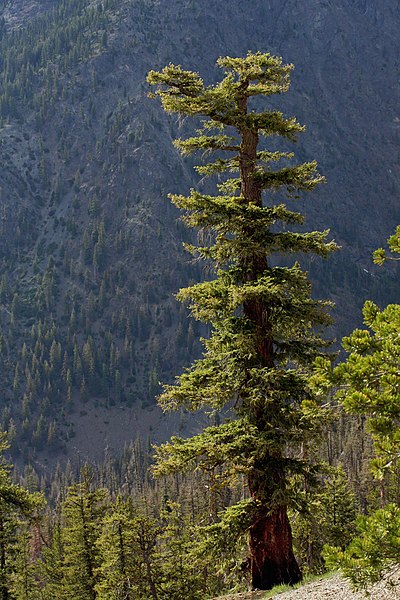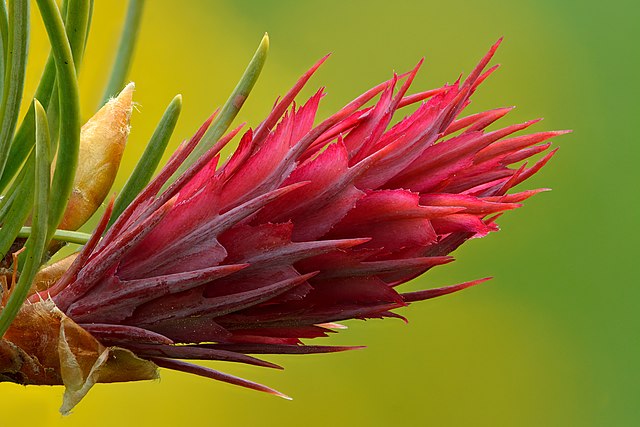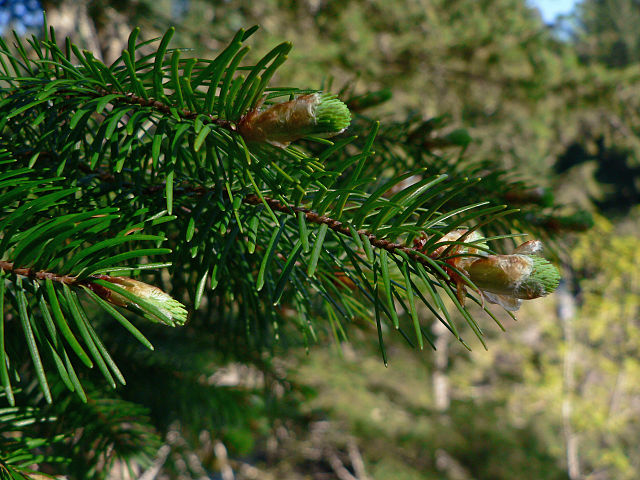The Douglas fir is an evergreen conifer species in the pine family, Pinaceae. It is native to western North America and is also known as Douglas-fir, Douglas spruce, Oregon pine, and Columbian pine. There are three varieties: coast Douglas-fir, Rocky Mountain Douglas-fir and Mexican Douglas-fir.
Image: Pseudotsuga menziesii 4584
Image: Pseudotsuga menziesii MHNT.BOT.52.4
Mature individual in the Wenatchee Mountains
Young female cone
Conifers are a group of cone-bearing seed plants, a subset of gymnosperms. Scientifically, they make up the division Pinophyta, also known as Coniferophyta or Coniferae. The division contains a single extant class, Pinopsida. All extant conifers are perennial woody plants with secondary growth. The great majority are trees, though a few are shrubs. Examples include cedars, Douglas-firs, cypresses, firs, junipers, kauri, larches, pines, hemlocks, redwoods, spruces, and yews. As of 2002, Pinophyta contained seven families, 60 to 65 genera, and more than 600 living species.
Conifer
The narrow conical shape of northern conifers, and their downward-drooping limbs, help them shed snow.
Tāne Mahuta, the biggest kauri (Agathis australis) tree alive, in the Waipoua Forest of the Northland Region of New Zealand.
Pinaceae: needle-like leaves and vegetative buds of Coast Douglas fir (Pseudotsuga menziesii var. menziesii)








